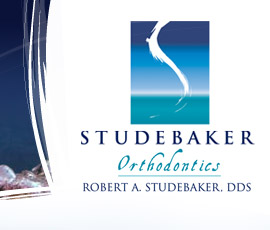


















Dr. Robert Studebaker
6086 FM 2920
Spring, TX 77379
Phone: 281-251-9229
Serving The Woodlands,
Klein, and Spring Texas.


|
Types of Appliances

To successfully complete your orthodontic treatment plan, patients must work together with the orthodontist. The teeth and jaws can only move toward their corrected positions if the patient consistently wears the elastics (rubber bands), headgear or other appliances as prescribed.
Some of the more common appliances used by Dr. Studebaker are:
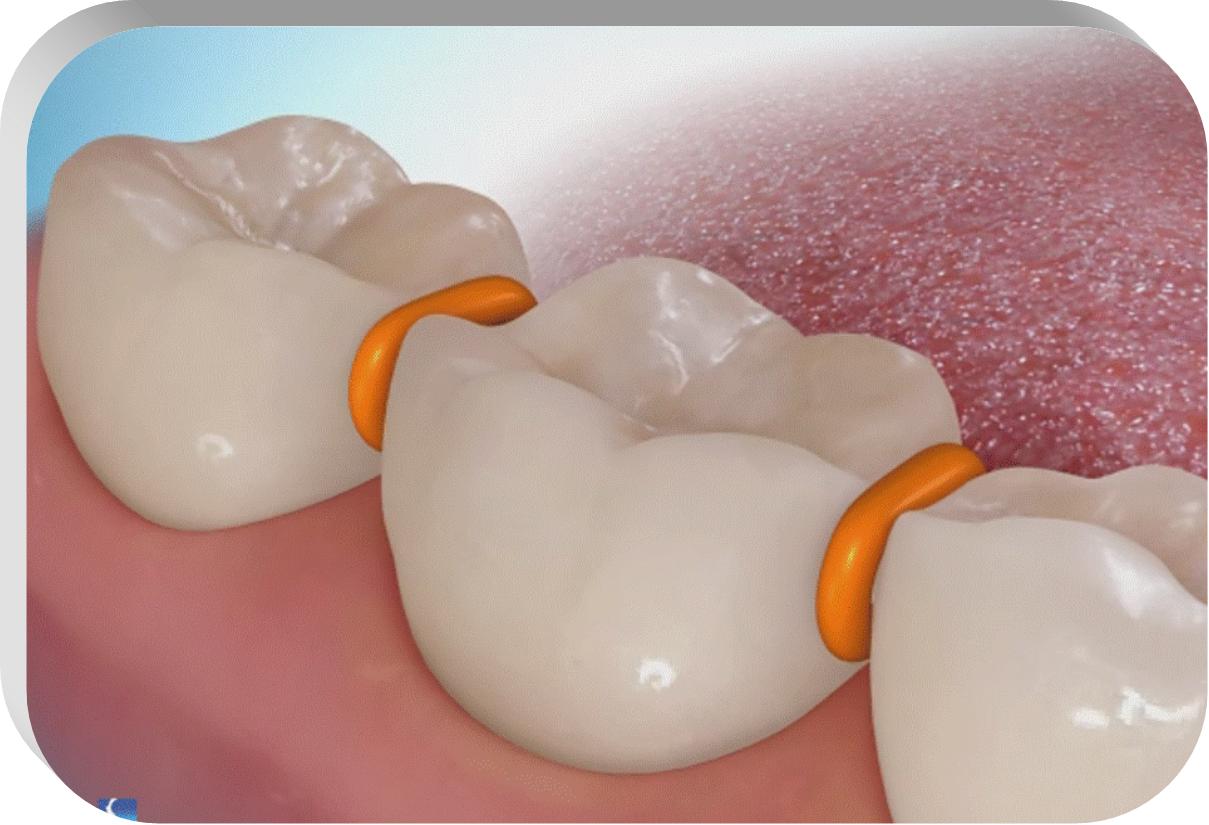 Separators are little rubber doughnuts that may be placed between your teeth to push them apart so that orthodontic bands may be placed during your next appointment. Spacers usually stay between your teeth for several days, and they are taken out before your bands are put on. They often cause some soreness, but this goes away in a few days. If a spacer comes out a day or two after its placement, call our office for a replacement. If a spacer comes out a day or two before your regularly scheduled orthodontic visit, it is not necessary to call our office for a replacement. In this situation, a loose spacer means that enough space was created between your back teeth. Please avoid sticky or chewy foods. Also do not floss those teeth that have spacers between them Separators are little rubber doughnuts that may be placed between your teeth to push them apart so that orthodontic bands may be placed during your next appointment. Spacers usually stay between your teeth for several days, and they are taken out before your bands are put on. They often cause some soreness, but this goes away in a few days. If a spacer comes out a day or two after its placement, call our office for a replacement. If a spacer comes out a day or two before your regularly scheduled orthodontic visit, it is not necessary to call our office for a replacement. In this situation, a loose spacer means that enough space was created between your back teeth. Please avoid sticky or chewy foods. Also do not floss those teeth that have spacers between them

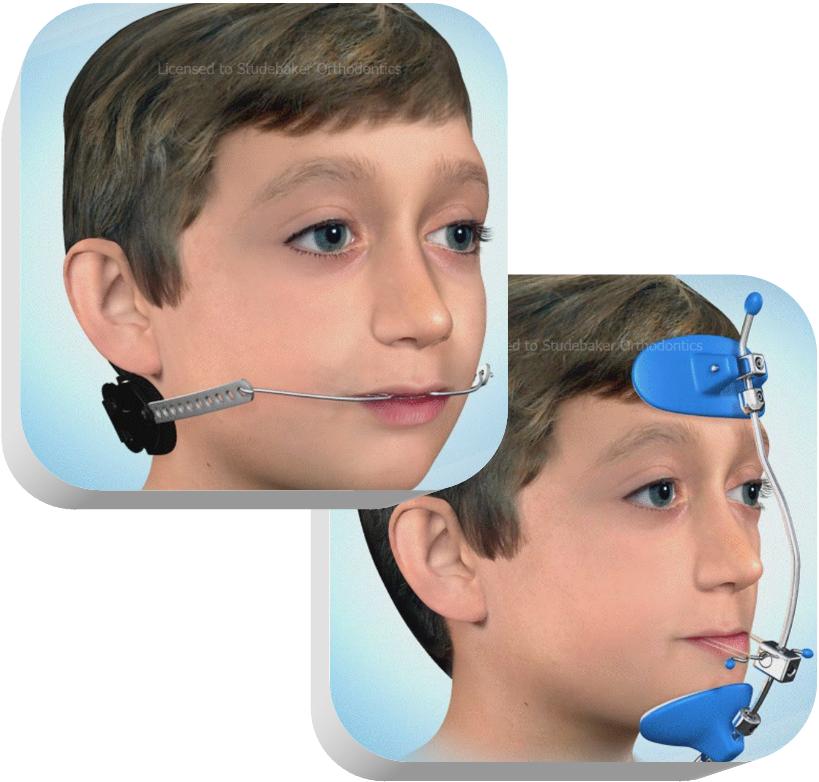 Headgear is used to treat patients whose teeth are in an "overbite," (with the uppers forward of the lowers) or an "underbite" (with the lowers forward of the uppers). Headgear gently "pulls" on your teeth to restrict further forward growth of your upper teeth and jaw. Headgear is used to treat patients whose teeth are in an "overbite," (with the uppers forward of the lowers) or an "underbite" (with the lowers forward of the uppers). Headgear gently "pulls" on your teeth to restrict further forward growth of your upper teeth and jaw.

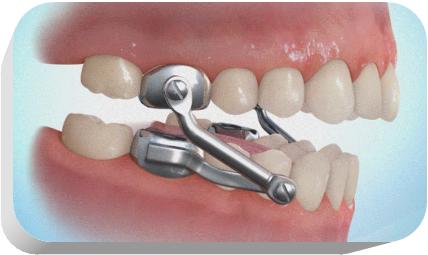
This Herbst appliance is used in young patients whose lower teeth and jaw are too far back. This appliance reduces overbite by inhibiting maxillary anterior growth and incrementally advancing the lower jaw to promote natural growth. Depending on the amount of bite correction needed, the Herbst appliance is normally worn for 8-15 months
BACK TO TOP

Rapid Palatal Expander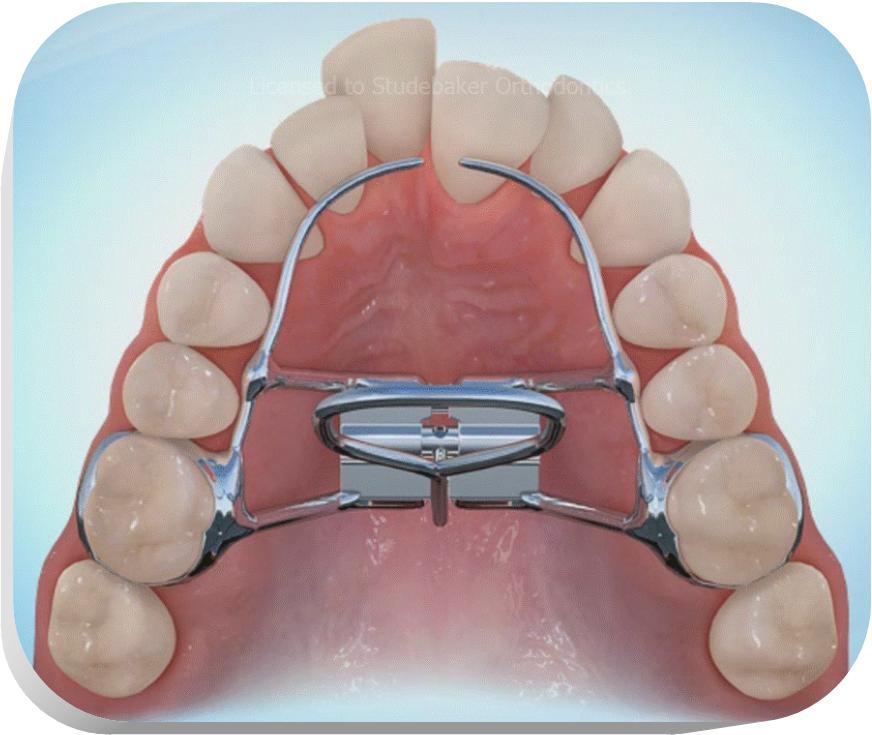 The RPE (rapid palatal expander) or Hyrax appliance is used to "expand" (widen) a narrow upper jaw. A key is inserted into the appliance and, with a pendulum-type movement, swiveled backward. An in-office demonstration will be provided so that you can properly turn the key at home. Dr. Studebaker will prescribe the desired number and frequency of turns and you should stop turning the appliance after the days indicated. A space may open between the upper two front teeth during the first few weeks as the appliance widens the upper arch. The space will disappear in the following weeks once the turning has stopped and braces are placed. This appliance typically stays in place 6-12 months after desired expansion is achieved to avoid relapses on the expansion achieved The RPE (rapid palatal expander) or Hyrax appliance is used to "expand" (widen) a narrow upper jaw. A key is inserted into the appliance and, with a pendulum-type movement, swiveled backward. An in-office demonstration will be provided so that you can properly turn the key at home. Dr. Studebaker will prescribe the desired number and frequency of turns and you should stop turning the appliance after the days indicated. A space may open between the upper two front teeth during the first few weeks as the appliance widens the upper arch. The space will disappear in the following weeks once the turning has stopped and braces are placed. This appliance typically stays in place 6-12 months after desired expansion is achieved to avoid relapses on the expansion achieved

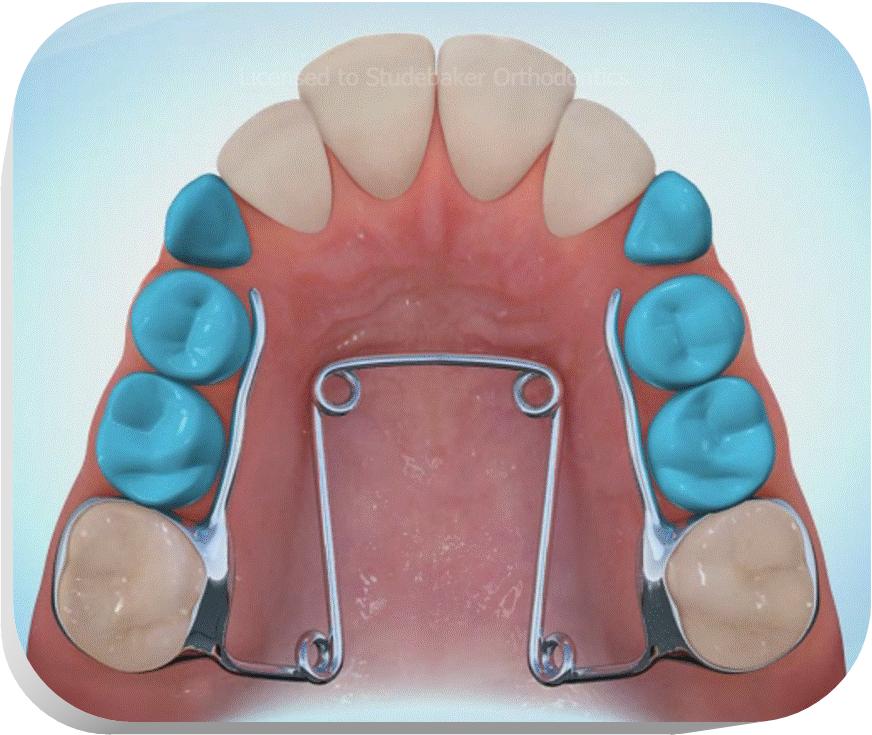
The Quad Helix appliance is a fixed, spring-loaded orthodontic appliance using four helix springs; used to widen your jaws and allow more room for the teeth to erupt into the mouth. The Helix is activated prior to cementation and will be adjusted as necessary throughout your treatment. The expander is generally worn for several months.

Lingual Arch
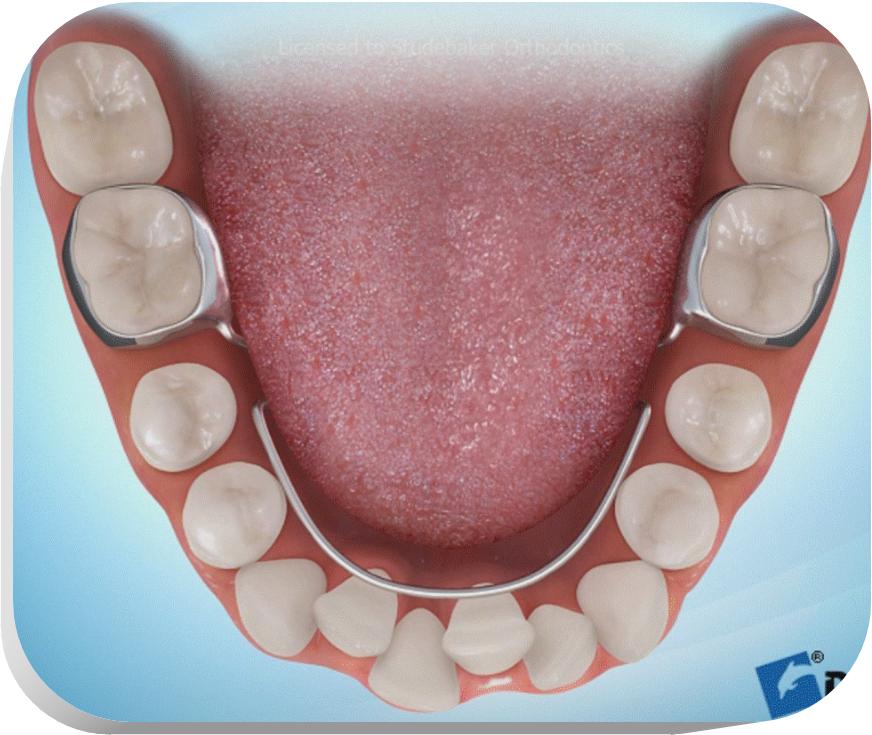
The Lingual arch is a wire that connects your molars. This appliance is glued to your molars and is not removable. The purpose of the lingual arch is to hold back your upper or lower first permanent molars and prevent them from moving forward. The lingual arch can also be used as a source of anchorage in Class II treatment cases or in extraction cases to prevent molars from moving forward while closing extraction spaces

Nance Holding Arch
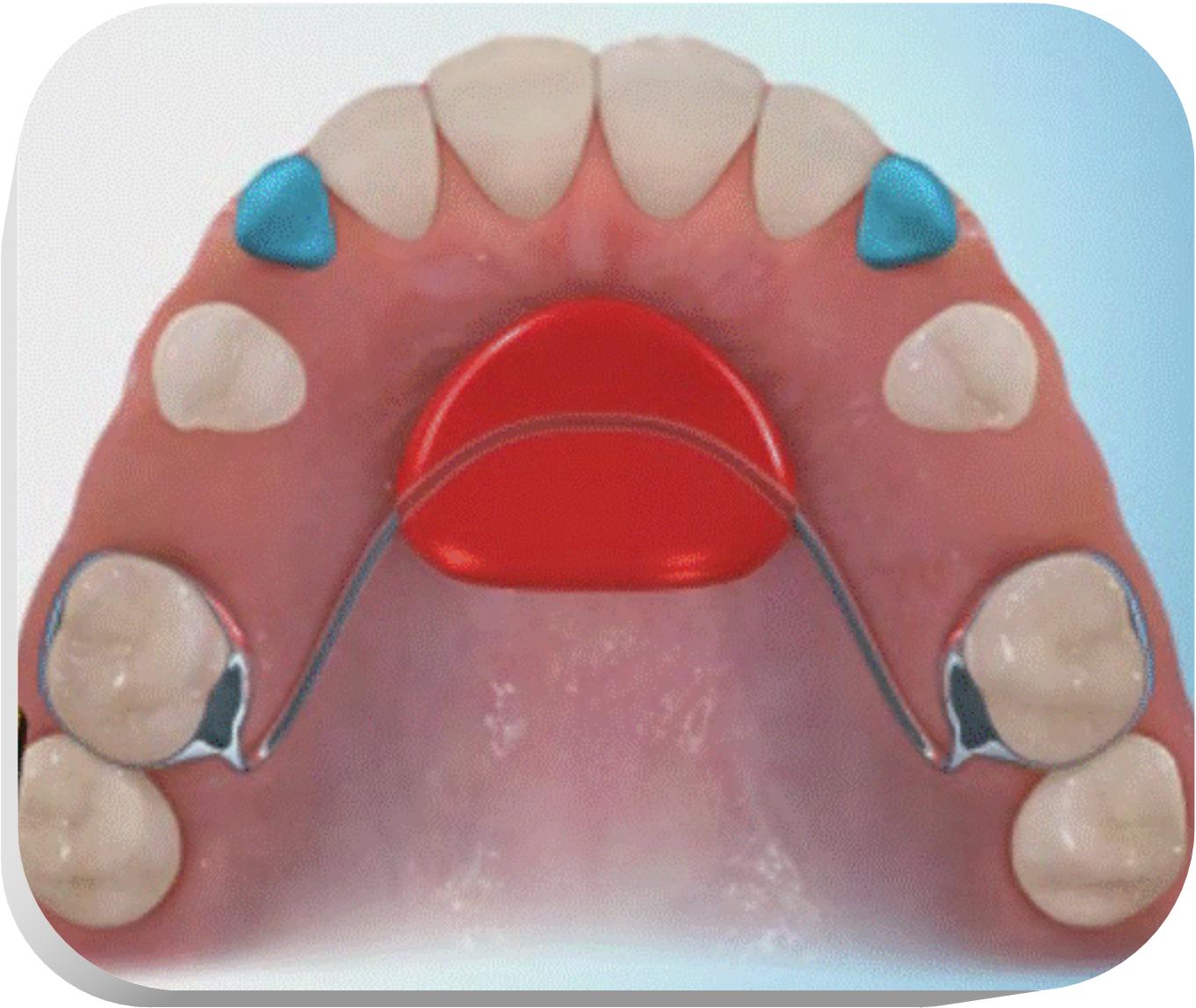
The Nance holding arch consists of two bands around the back teeth and an acrylic button that covers part of your anterior palate. The Nance button can be used as a space maintainer, in cases in which baby teeth have been lost prematurely, and the first molars need to be prevented from coming forward. The Nance holding arch is also used for additional support to help drive back the anterior teeth. This appliance causes little discomfort and has little effect on the speech.

Wearing elastics (rubber bands) improves the fit of your upper and lower teeth. Wear rubber bands as instructed because the rubber bands work far more efficiently if they are worn as prescribed.

Positioners complete the final tooth movements in your orthodontic treatment. With your full cooperation, you should only need to wear the positioner appliance for 4-8 weeks.

Retainers
Retainers may be removable or fixed. They hold your teeth in their new, correct positions after your teeth have been straightened. Your orthodontist will instruct you on how to care for your retainer and about the duration of the wear. Wearing your retainer as directed is crucial to prevent regression of your treatment.
Click here for more information on how to care for your retainer.

|
|
